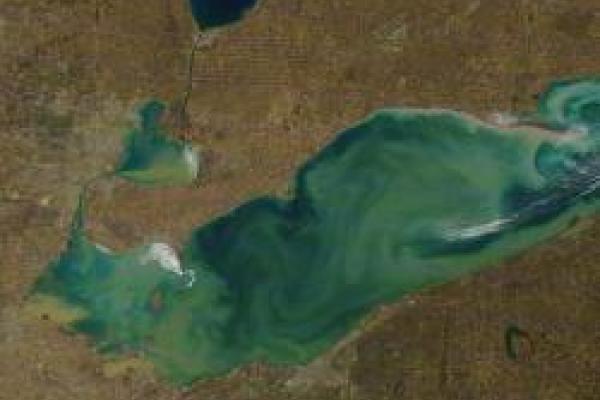Publications by EEOB faculty 03 - 10 Mar 2014

Assessing and addressing the re-eutrophication of Lake Erie: Central Basin Hypoxia
Donald Scavia, J. David Allan, Kristin K. Arend, Steven Bartell, Dmitry Beletsky, Nate S. Bosch, Stephen B. Brandt, Ruth D. Briland, Irem Daloglu, Joseph V. DePinto, David M. Dolan, Mary Anne Evans, Troy M. Farmer, Daisuke Goto, Haejin Han, Tomas O. Hook, Roger Knight, Stuart A. Ludsin, Doran Mason, Anna M. Michalak, R. Peter Richards, James J. Roberts, Daniel K. Rucinski, Edward Rutherford, David J. Schwab, Timothy M. Sesterhenn, Hongyan Zhang, Yuntao Zhou. 2014. Journal of Great Lakes Research, in press. DOI: 10.1016/j.jglr.2014.02.004
Highlights
- Lake Erie cyanobacteria blooms increased and extensive hypoxia and benthic algae returned
- We document recent trends and impacts in key eutrophication-related properties
- We provide guidance for revised hypoxia-based loading targets
- Reducing hypoxic area to 2,000 km2 requires 46% reduction in total phosphorus loads
- Reducing hypoxic area to 2,000 km2 requires 78% reduction in DRP loads
- Reductions to these levels are also protective of fish habitat.
- Reducing agricultural loads requires more and more targeted BMPs
- Climate change will make load reductions more difficult
Abstract Relieving phosphorus loading is a key management tool for controlling Lake Erie eutrophication. During the 1960s and 1970s, increased phosphorus inputs degraded water quality and reduced central basin hypolimnetic oxygen levels which, in turn, eliminated thermal habitat vital to cold-water organisms and contributed to the extirpation of important benthic macroinvertebrate prey species for fishes. In response to load reductions, initiated in 1972, Lake Erie responded quickly with reduced water-column phosphorus concentrations, phytoplankton biomass, and bottom-water hypoxia (dissolved oxygen < 2 mg/l). Since the mid-1990s, cyanobacteria blooms increased and extensive hypoxia and benthic algae returned. We synthesize recent research leading to guidance for addressing this re-eutrophication, with particular emphasis on central basin hypoxia. We document recent trends in key eutrophication-related properties, assess their likely ecological impacts, and develop load response curves to guide revised hypoxia-based loading targets called for in the 2012 protocol amending the Great Lakes Water Quality Agreement. Reducing central basin hypoxic area to levels observed in the early 1990s (ca. 2,000 km2) requires cutting total phosphorus loads by 46% from the 2003-2011 average or reducing dissolved reactive phosphorus loads by 78% from the 2005-2011 average. Reductions to these levels are also protective of fish habitat. We provide potential approaches for achieving those new loading targets, and suggest that recent load reduction recommendations focused on western basin cyanobacteria blooms may not be sufficient to reduce central basin hypoxia to 2,000 km2.
